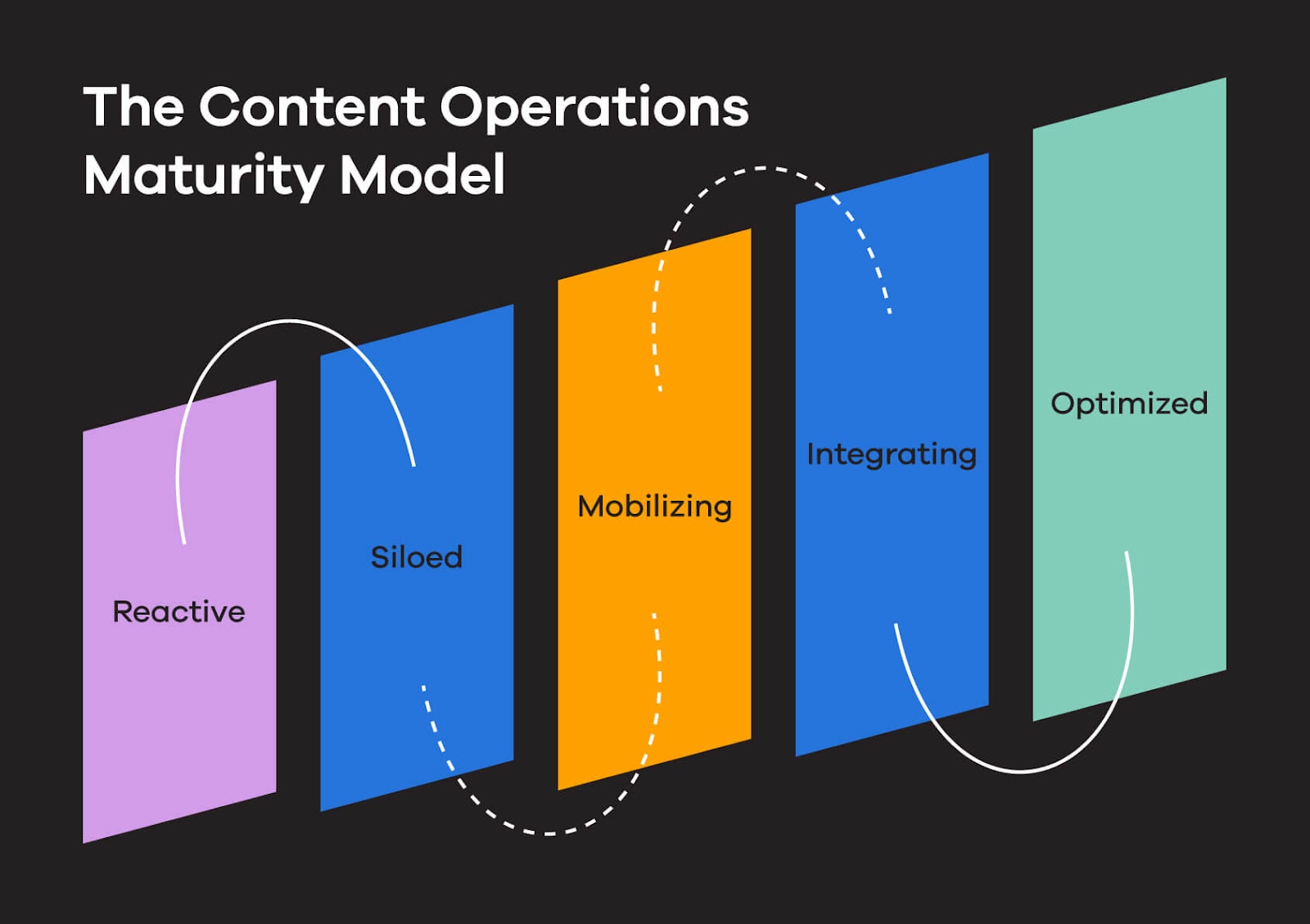
How to define the right UX team goals
Sidika Sehgal

Interested in UX writing and content design?
Explore our content design and UX writing training:

When I started working at a fintech startup as a UX writer, I wanted to do everything. It was my first full time role as a UX writer and I was full of ideas for UX team goals. I wanted to rewrite all legacy copy that had been poorly written. I wanted to make sure that every bit of copy had been reviewed by me. I wanted to prove to designers and PMs that UX writers did high-impact work.
When the project finished a year later, I was disappointed because I felt there hadn’t been enough progress towards these goals. After many post-mortems with my manager and a lot of reflection, I realized that while my goals were right, the timing was wrong.
I’d made many mistakes, so when I joined Rubrik last year, I had the perfect opportunity for a do-over. I tried a different way of setting goals for myself and measuring my progress. This new way is intentional, simple and effective. I believe that it can help fellow UX writers define the right milestones for themselves, and help those leading teams to define the team’s goals for the year.
Step 1: Start where you are
Before I set goals, I wanted to understand the current state of affairs. I wanted to know what the team wanted of me, what was going well, and what the team was struggling with. Why? I didn’t want to swim upstream. I wanted to make sure that I used my team’s momentum or current to help me achieve my goals.
To do this, I began by setting up 1:1s with every member of the design team, including researchers and other writers. Some frequently asked questions were:
- How do UX writers collaborate with designers today? In the current process, what is something that works really well?
- What would you want to change about how you collaborate with UX writers?
- What is an area of opportunity for the UX writing team?
- Where do you hope to see UX writing in another 2 years at Rubrik?
I went back to Rob Mills’ article about content maturity models and tried to place my team’s content maturity on this framework by Kontent.

My assessment from everything I’d heard was that our writing team was somewhere at the end of Stage 2 or the beginning of Stage 3. What led to this?
I thought about my conversations and noticed the common themes that were emerging. Designers deeply valued the UX writing team, and the UX writers had done a great job of proving the value of good UX copy. Our team was about 2 years old and we had some writing guidelines in place already. So we weren’t quite lagging or falling behind.
But everyone on the team strongly felt the need for more writers and we hired 2 more writers (including me). Designers and design managers reiterated that they would love to work with writers earlier, rather than later, in the design process. They wanted to have writers contribute during PRD readouts and during design reviews. One design manager said, “When difficult decisions are being made while doing design iterations, they are essentially about copy. So writers need to be a part of that discussion.” To me, it seemed like our team was gaining momentum.
I also wanted to understand how to maximize our team’s impact on the product. During my 1:1s, I asked my colleagues what feedback our users were giving us, and I picked their brain on parts of the product where content could have a high impact.
The insights from my conversations became the foundation of how I set my goals.
Step 2: Create a wishlist of UX team goals
From the very first day at Rubrik, I started jotting down all my ideas. This was an exhaustive list of things I’d like to work on, practices I’d like to introduce, things I wanted to see change.
I was new to the organization, and this gave me the advantage of vantage. I wasn’t aware of the constraints and so there were no boundaries for what was possible. I couldn’t evaluate these ideas for whether they were sensible or achievable.
I also remembered something an editor I had interned with had said, “You never edit when you’re writing.” So without editing or filtering my ideas, I just wrote down everything I could think of! These included:
- Partner with the research team to collect feedback on UX copy
- Partner with the engineering team to update old error messages
- Join PRD readouts, research shareouts and design reviews
- Create component-specific writing guidelines
- Create a glossary of technical terms for each type of data we back up in our product
- Meet the writing team weekly to discuss updates that would impact many product areas
- Audit legacy copy
A few weeks later, our UX writing manager facilitated a similar exercise for our small, but mighty team of 5 writers. Other writers voiced similar ideas, and there were many more that got added to the list.
Step 3: Filter the list of ideas
When I began to winnow my ideas, I kept a few considerations in mind.
First, I thought about how I could solve our current needs and pain points. Before I joined the team, designers in India had been working with UX writers located in the US. Collaborating across timezones can be challenging, and doesn’t allow for deeper involvement of UX writers. One of the most important goals for me was to work on products being developed in the India office.
Second, I thought about what aligned with our business goals. I really believed that it was important for us to audit UX copy that had been implemented before there was a UX writing team. But I realized that the product roadmap didn’t leave a lot of room for going back and updating things that were already live in the product. I parked this goal of reducing content debt for later.
Third, I went back to my conversations with my colleagues and considered what changes they would be open to and what initiatives they could support. Let’s take partnering with the research team for example. A good way to partner with them would be to attend usability testing calls for each project. This would help me understand our users better and write relevant UX copy. This was a reasonable thing to ask of my team.
However, running a content-only research study was an unreasonable goal. They were a small team, often crunched for time. It was a good goal, but it wasn’t the right time.
I worked with my manager and my skip manager to filter the long list of ideas and arrive at a few goals I would work on in the coming year.
We didn’t abandon the ideas that didn’t make the cut this time. There would come a time when business goals, our bandwidth and maturity would allow us to work on them. We decided to maintain the wishlist and revisit it the next time I was setting goals for myself.
Step 4: Make the goals SMART
Once I had identified a few ideas I wanted to work on in the coming year, I shifted my focus from the what to the how. I made every goal SMART — specific, measurable, actionable, relevant and time-bound.
When I was creating action items for each goal, I considered my own bandwidth with pragmatism. Remember the goal of supporting projects in India? My aim was to support 8 of 16 projects in India. I wanted to collaborate on some projects deeply, rather than work on all projects at the surface level. This goal was specific and realistic.
I had learnt my lesson at the fintech startup. Back then, I was one writer supporting 15 designers. While I wanted to make sure that every bit of copy had been reviewed by me, it simply wasn’t possible. A smart goal at the time would have been to make the case to hire another UX writer!
One of my personal goals was to improve visibility for UX writing in the Indian tech ecosystem. I decided I would publish 1 article every quarter and publish 2 posts monthly on LinkedIn. This was time-bound.
For this goal, I didn’t want to measure views or engagement on my posts. (The short version of the reason is that content creation takes time to yield results. The long version of the reason isn’t relevant to this article.) So I only chose to measure the input. You can choose whether you’d like to measure your effort, or measure the impact of your work. Think about the early signs that show that you’re on the right track and make a mental note to look out for them.
Some mindsets for success
By defining goals in this intentional manner, I set myself up for success. I could see the progress I made towards them and my team acknowledged it as well. I felt more satisfied. This isn’t to say that there aren’t moments of disappointment or frustration. But when there is a general feeling of moving forward, disappointment or frustration doesn’t last long.
Looking back, I believe that choosing not to solve all problems gave me more focus to solve a few problems really well and make progress. It’s not possible to do everything in a year. Just like you don’t deadlift 50kg on your first day in the gym, you don’t improve the user experience with better copy in just one year. You have to work your way up to it.
The idea that effective change happens over time and by taking small steps in the right direction isn’t original. This is true in almost all spheres of life. You can’t force a 6 month old infant to speak in full sentences, and you can’t make sweeping changes in the way organizations work before the time is right. This mindset was key in this process of setting goals.
Anne Lamott explained this mindset brilliantly in her book “Bird by Bird”. She wrote:
Thirty years ago my older brother, who was ten years old at the time, was trying to get a report on birds written that he’d had three months to write, which was due the next day. He was at the kitchen table close to tears, surrounded by binder paper and pencils and unopened books on birds, immobilized by the hugeness of the task ahead. Then my father sat down beside him, put his arm around my brother’s shoulder, and said, “Bird by bird, buddy. Just take it bird by bird.”
So when you think about all the things you want to do as a UX writer, all the ideas you want to bring to life, just take it bird by bird.


